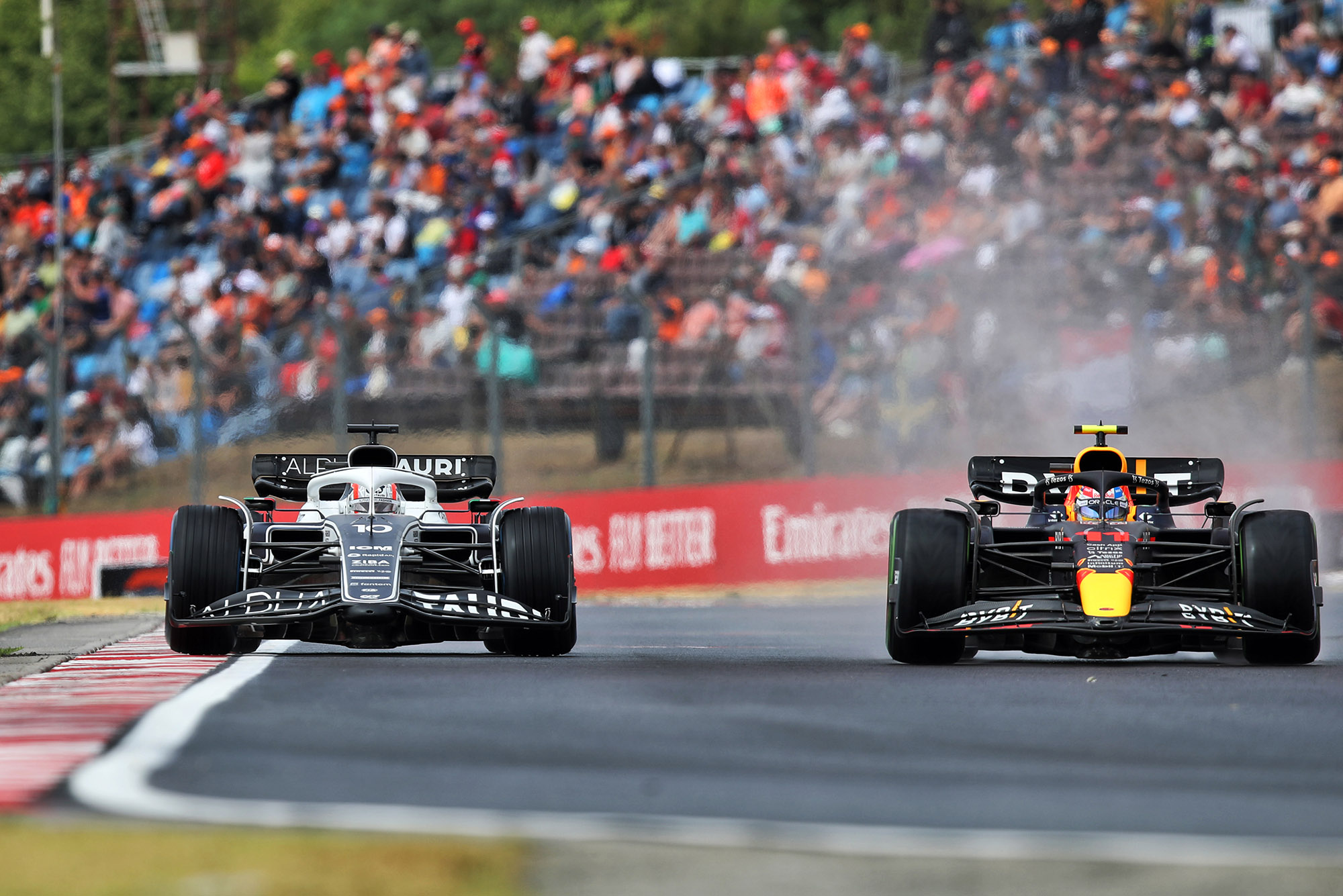Up Next

Ford had discussions with existing and prospective teams about a Formula 1 partnership and considered its own works team but nothing “felt right” before its now-confirmed Red Bull deal emerged as an option.
An engine collaboration between Red Bull Powertrains and Ford will bring the US manufacturer back into F1 for the first time since 2004, when it sold the Jaguar team to Red Bull.
Ford was motivated to find a route onto the grid by F1’s growing popularity in the United States and the increased electrification of its engines, which will have a near-50% electrical component from 2026 – when the Red Bull-Ford engine will debut.
Its process began more than two years ago and Mark Rushbrook, Ford Performance director, said the company “studied all options” for a return but only wanted to do so “very strategically”.
It was only when Red Bull talks began in the second half of 2022 that a clear preference materialised.
“We started that consideration of, ‘OK, this is looking like maybe it’s the right time to get back into Formula 1,” Rushbrook said.
“But you’ve got to come back in the right way. And we definitely took our time to listen to a lot of people.
“As soon as they knew Ford had some interest for at least consideration, a lot of people came forward, whether it was an existing team or prospective teams to see if there was an opportunity for us to partner with them. We approached some teams.
“But initially, none of them seemed right. And coming back in as a full factory [effort], owning a team, as we had done in the past, also didn’t feel right.
“I’d say that with Red Bull, it was very quickly apparent that what they were looking for in a partner is something that we could bring, and what we were looking for in a partner was something that they could bring.
“We knew it was the right partnership from the very beginning. We had more discussions to get into more detail but it’s very important to come into the sport at the right time and in the right way with the right partner.
“We believe we’re doing that on both counts.”
The deal will run to at least the end of 2030, supplying both Red Bull Racing and AlphaTauri, and emerged as Ford’s favoured option because it presented a unique opportunity.

Red Bull’s decision to become an engine manufacturer was sparked by Honda’s decision to quit F1 and meant it was the only non-automotive company preparing for the 2026 rules.
That gave Ford the chance to partner with an organisation that is already tooled up to build an F1 engine but is not a rival manufacturer.
“It definitely is right to partner with somebody like Red Bull Powertrains because they’re not a rival auto manufacturer,” said Rushbrook.
“That would not have felt right or appropriate to partner with another auto manufacturer together on the power unit.
“There certainly were some opportunities to do that. But that wasn’t the right way for us.”
Red Bull Powertrains will be what Rushbrook calls “the foundation” of the initiative that will end in engines entered as ‘Red Bull-Ford’, although Ford Performance employees will apparently be bedded into the project too.
It was always a condition of Red Bull’s that any manufacturer alliance for the 2026 project would still allow it to effectively retain control, be that from an ownership or technical standpoint – Porsche’s desire to buy a stake in the organisation was what led to the German manufacturer’s bid to partner Red Bull falling apart last year.
Red Bull’s work on its newest facility at its Milton Keynes campus meant it was well positioned to produce an internal combustion engine for the first time although it welcomed assistance on the hybrid side in particular.
That is where Ford said it will be most involved because it has expertise to offer but wants to gain knowledge for its $50billion investment in electric vehicles.
“The initial areas that have been identified where we’re working are certainly in the battery cell technology, in the electric motor itself, the control software – both in the fundamental software as well as to optimise the performance – and the analytics within the power unit itself,” Rushbrook said.
“We’re also hoping to learn more about aerodynamics to bring that back to our road car, some of the processes and tools that they have.”







